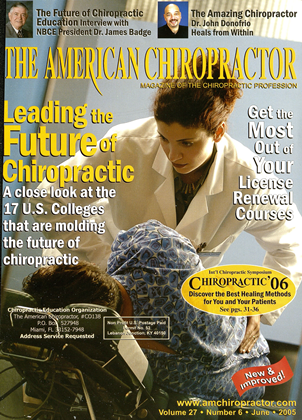Reference: "Prescription-related illness—a scandalous pandemic" Journal of Evaluation in Clinical Practice Nov. 2004, Vol. 10, No. 4, pp. 491-497 Hugh McGavock, B.Sc, M.D.. F.R.C.GP. Key Points from Dan Murphy 1. Prescribed drugs are a major cause of global morbidity and mortality. Prescription-related disease is a pan demic. Medical doctors: •Often prescribe drugs unnecessarily. •Often prescribe drugs with a wrong or "guessed at" diagnosis. •Arc poorly trained in pharmacology. •Follow evidence based guidelines, which do not work when there is more than one condition requiring more than one drug. About 5 percent of all acute hospital visits are because of prescribed drugs. Seniors over age 70 are the most vul nerable group to prescription drug adverse reactions. 18 percent of all deaths of elderly pa tients in hospitals are related to pre scription drugs, and half of these deaths were avoidable. "More than 70 percent of upper res piratory infections are caused by vi ruses which will not be affected by antibiotics; but the antibiotics will devastate the normal bacterial flora throughout the body and make it more likely that the viruses will flour ish, that secondary pathogenic bac teria will supervene and that resistant strains will emerge." (WOW!) More than 1000 patients in the United Kingdom die every year of antibiotic- related adverse drug reactions. The most commonly prescribed drugs for children, women, and men are anti biotics, pain drugs and asthma drugs. 10. In the USA, drug-caused illness costs more than $1 billion per year, causes more than 100,000 deaths per year, and is responsible for more than 12 per cent of elderly hospitalizations per year. The more prescription drugs a person is on, the more likely that they will suffer a serious adverse reaction (i.e., for seniors, it is 33 percent, if taking six drugs). More patients receive their antibiot ics over-the-phone than from actu ally visiting the doctor, which is "per ilously close to malpractice." In medicine (and probably in chiro practic), diagnostic uncertainty is un avoidable. Many drugs are prescribed with no expectation of improving the under lying condition, but with the hope of symptom relief and placebo effect. It is perfectly correct for GPs to pre scribe drugs to relieve symptoms and to use drugs for self-limiting condi tions and for non-curable conditions. (I believe that it is perfectly correct for chiropractors to prescribe adjust ments, etc., for temporary symptom relief, and for self-limiting, and noncurable conditions.) When a medical doctor prescribes drugs following a presumptive or "guess" diagnosis, the doctor is sub jecting the patient to measurable risk of iatrogenic disease, without the cer tainty of benefit. The most important long-term harm to patients is caused by non-steroidal anti-inflammatory drugs, responsible for over 30 percent of all serious ad verse drug reactions. (Wow!) 90 percent of drugs used today have been developed since 1970. Medical doctors are poorly trained in drugs in medical school. It is impossible for a fulltime pharmacologist to have ad equate knowledge of all the drugs in use. Prescribing problems resulting in morbidity and mortality are inevitable. The drug industry has played upon the doctors' relative ignorance of pharmacology to indicate that every new drug is effective and safe, which they are not. It takes a few years of use before a drug's potential for harm is discov- A 1978 graduate of Western States Chiro- praclic College. Dr. Dan Murphy is , on the faculty of Life Chiropractic \ College Hext, and is the I ice President of the International Chiropractic Association. For more information, visit www.danmitrphyclc.com.
 View Full Issue
View Full Issue






